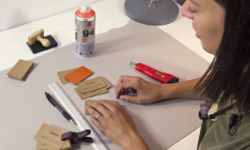HOU223 – Taking Houdini Digital Assets to the Next Level by Jeronimo Maggi
Release date:2023, February
Duration:04 h 53 m
Author:Jeronimo Maggi
Skill level:Beginner
Language:English
Exercise files:Yes
This course focuses on the development of Digital Assets, which are central to the everyday use of Houdini. Whether you have created your own HDAs or downloaded ones made by others, the aim of the course is to help you understand what makes a good HDA and how to apply these concepts to create more robust assets. Building on the foundation established in HOU140 – Houdini FX Tool Building Foundation, this intermediate course assumes basic knowledge of Houdini and how HDAs work.
The course centers around a realistic production scenario of creating a Digital Asset for generating roof tiles on various buildings. In the initial classes, you will learn how to create a user-friendly interface and various techniques for making HDAs more accessible. Subsequent classes will cover ways to enhance the performance and iteration times of the HDA, best practices for organizing its internals, validating input attributes, and performing error checks, as well as documenting and debugging.
Towards the end of the course, you will learn about updating HDAs and two new techniques for automating tests that check the integrity of the asset by performing geometry and render comparisons in Python. The final classes will also cover some useful Python tips and tricks that can be applied to HDAs, culminating in the completion of the roof tile generator project. Upon completion, you will have learned various techniques to create better, more reliable, and more user-friendly HDAs.
The course instructor, Jeronimo Maggi, is an FX TD with eight years of experience working with Houdini on feature films. He has taught Houdini in the education field and currently works at Walt Disney Animation Studios as a General TD.
Class Ouline:
Class 1: What makes a good HDA?
In this class, the project example of generating roof tiles will be introduced, and the process of turning it into a Digital Asset will be explained. The focus will be on understanding the principles that make a good HDA and learning how to approach the HDA creation process.
Class 2: The User Interface
The second class will cover the new dialog for creating HDAs in Houdini 19.5, and how to leverage namespaces and versions effectively. The focus will then shift to converting the roof tiles setup into a Digital Asset, while applying the concepts learned in the previous class. The main emphasis will be on creating a user-friendly interface by promoting parameters, and best practices to keep it organized and easy to use.
Class 3: Organizing the Internals, Part 1
This class will cover best practices for organizing HDAs, such as using internal attributes to avoid clashing with existing ones, being explicit about output attributes, and maintaining existing attributes and topology. These concepts will be applied while creating a new utility HDA for deleting primitives based on their area or perimeter.
Class 4: Organizing the Internals, Part 2
Continuing from the previous class, this lesson will explore explicitly reading input attributes and adding other small details to make HDAs even more user-friendly. The focus will then shift to improving HDA performance using the performance monitor, and techniques to allow for faster iteration.
Class 5: Node Tab and Error Checks
This class will cover using guide geometry, message nodes, and descriptive parameters of the Node tab of the HDA. Validating input data is a crucial step in creating a Digital Asset, and the lesson will go over a technique to validate input data and how to report errors in a more user-friendly way.
Class 6: Debugging and Documentation
This class will emphasize the importance of documentation and cover best practices for documenting HDAs using Houdini’s Wiki Markup, organizing nodes using sticky notes and node comments, and commenting VEX and Python code. The lesson will also cover creating visualizers for future debugging.
Class 7: Updating and maintaining
In this class, best practices for updating HDAs will be discussed, such as versioning HDAs and dealing with adding and removing new features and parameters. The roof tile Digital Asset will be updated to be more flexible and include new features.
Class 8: Testing
This lesson will cover the importance of testing HDAs and how to create and automate tests using different techniques, such as comparing renders and geometry in Python.
Class 9: Scripting
This class will cover Python use cases for HDAs, such as menu scripts, event callbacks, and caching. Examples of event callbacks, creating custom menu scripts, and caching menu data to improve performance will be explored. Finally, creating a custom tab menu tool that can create multiple nodes will be discussed.
Class 10: Project finalization
The final class will cover finalizing the project and using the HDA created in all the previous lessons to generate the tiles for the final render. The lesson will also cover shading and rendering the project.





 Channel
Channel






What software do you use to compress these video files?
Please can you upload this Domestika course: Costume Design for Film and TV. Thanks
Costume Design for Film and TV
Can you putting this for viewing please?